The LG G7 Review: A Rushed Attempt?
by Andrei Frumusanu on August 9, 2018 11:00 AM EST- Posted in
- Smartphones
- LG
- Mobile
- LG G7 ThinQ
- LG G7
Camera - Architecture & UI
The main camera on the LG G7 differs very little from what the V30 incorporated. The sensor is still a Sony IMX351 which offers an active pixel matrix of 4656 x 3496 (16MP). The downside here is that this is a rather small 1/3.09” sensor which results in 1µm pixel pitches. As this is the same sensor as used in the LG V30 – I’m not too worried about the performance as we saw very competitive results from the sister flagship. The lens has an f/1.6 aperture, a viewing angle of 70°, and the module supports an OIS mechanism.
The wide angle camera is one of LG’s flagships’ distinguishing feature as we saw essentially no other mainstream vendor adopt the same type of camera, with most of them opting for telephoto lenses in their secondary modules. The G7 continues the trend here, but fine-tunes the wide-angle camera a bit. We’re seeing the exact same sensor as on the main camera, but the lens system has changed as this is now an f/1.9 lens with a slightly reduced wide viewing angle of 107° rather than the 125° optics found in the G6 and V30. The reduced viewing angle is meant to reduce the more extreme cases of fish-eye effect and also reduce chromatic aberrations on the edges of the image. The wide-angle module doesn't sport OIS.
Camera software wise, there’s little change from what we saw on the updated V30 firmware – both camera applications offer a wide variety of features without being cumbersome to the capturing experience. The AICam which was introduced in the V30s and backported to the V30 is also part of the G7’s camera. Unfortunately as we’ll see in the following evaluation the results of the AICam capture results are quite disappointing and are no better than a gimmick, resulting in mostly detrimental image quality in most scenarios.
Camera - Daylight Evaluation
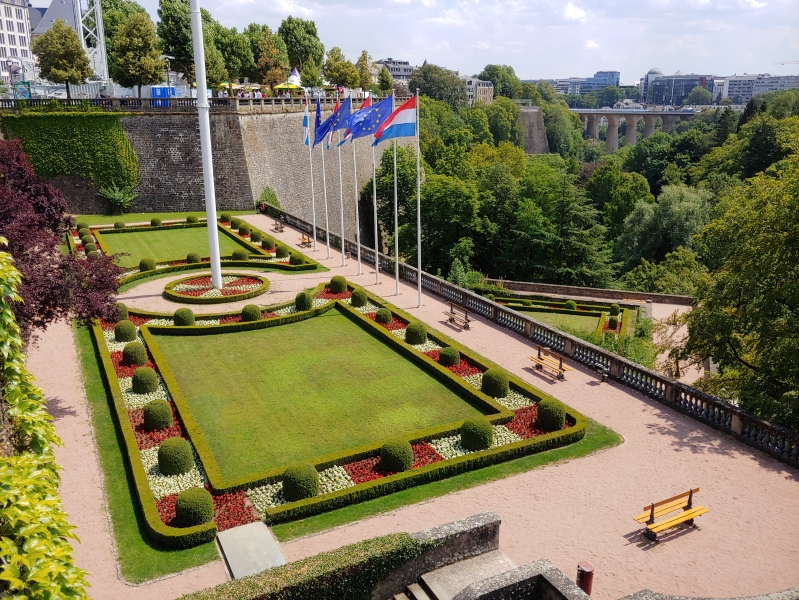
[ G7 ] - [ G6 ] - [ V30 ]
[ Mi MIX 2S ] - [ Pixel 2 XL ] - [ Mate 10 ] - [ P20 ]
[ OnePlus 6 ] - [ P20 Pro ] - [ S8 ] - [ S9+ ] - [ iPhone X ]
In the first scenario the G7 offers a very similar exposure and colour balance to the G6 and V30 – although it’s ever so slightly more exposed at 1/1042s versus the V30’s 1/1207s take. The G7 offered slightly lower dynamic range through more reduced highlights and darker shadows than say the S9 or OnePlus 6, but the overall result was still very good and among the top performers.
In terms of detail retention there’s however some glaring differences between the G7 and the V30. If one opens the images in their native resolution, it's plainly visible that the G7 has vastly different processing in place. The result is a watercolour-like effect on all details throughout the scene and most blatantly visible in the leaves of all greenery throughout the picture. The effect is also very notable on the edges of objects throughout the picture, and is seemingly applied non-discriminately to almost all scenarios.
Switching over to the wide-angle shot, we see the differences between the G6 and V30’s modules and the G7’s new shooter: the G7 is able to capture a more natural wide dynamic range, capturing more details in the shadows. I do prefer the V30’s better retention of highlights as it’s a more accurate representation of the very bright conditions of the scene.
An interesting phenomenon that we’ll see more often today, is an odd behaviour of the camera and its processing: When shooting pictures rapidly in succession, the camera software seems to fall behind in terms of producing processed images, and the result is closer to the result of what the sensor is actually capturing. This can be seen in the versus comparison; the latter shot was shot sequentially within the same second. This is extremely valuable as we can directly see what kind of processing is done on the picture, and what’s obvious is that there’s a noise reduction filter which smudges the details, as well as the effect of a sharpening filter applied on top. There’s also some software HDR processing going on in attempting to bring out more highlights in the picture.
The noise reduction filter in particular is very destructive and it makes it easier to understand what’s happening on the main camera photo samples.
Of course, the fact that the camera’s processing suddenly doesn’t work when capturing pictures in quick succession is something that shouldn’t be happening in the first place. I’ve actually encountered the same behaviour on the V30 in past camera evaluations, but now it looks that this is very much a characteristic behaviour of LG’s camera software.
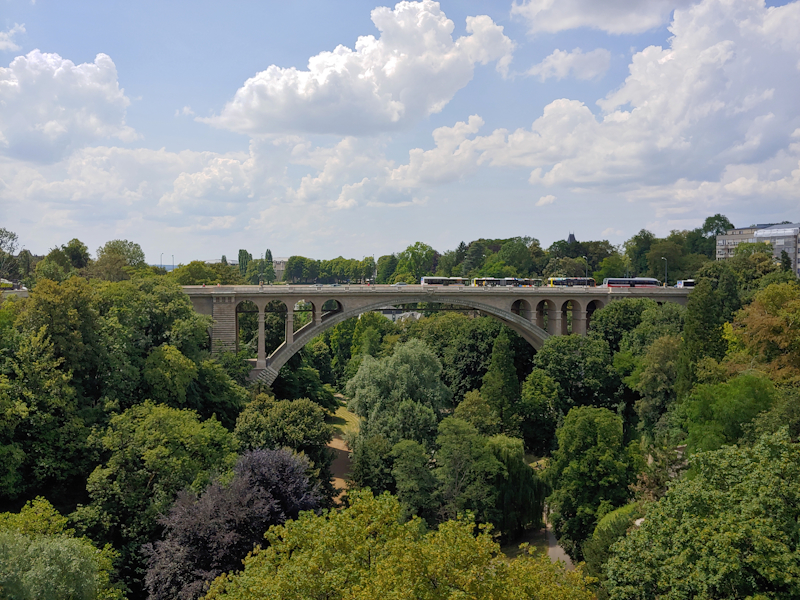
[ G7 ] - [ G6 ] - [ V30 ]
[ Mi MIX 2S ] - [ Pixel 2 XL ] - [ Mate 10 ] - [ P20 ]
[ P20 Pro ] - [ S9+ ]
[ OnePlus 6 ] - [ iPhone X ]
The next shot the G7 doesn’t fare well at all. First of all the phone was extremely inconsistent on deciding on the exposure and processing. In the first auto shot the camera does a relatively longer exposure at 1/1205s which is actually longer than the V30’s 1/1884 take. The problem is that the software falls prey to typical over-processing and destroys most highlights in the scene, resulting in a very flat image with very little remaining dynamic range. Compared to the V30 shot, the G7 performs terribly here.
In the auto and , the G7 severely underexposes. Even worse is that it couldn’t decide between HDR processing or not, and this wasn’t an issue of quick subsequent shots as described earlier.
Detail retention was just abysmal, this is essentially the same camera hardware as on the V30 yet what the G7 outputs couldn’t be more further away from the sister flagship’s shot.
Using the AICam in this scene amounts to nothing more than a simple colour filter and brings no advantage whatsoever.
Unfortunately what was said about the main camera also applies to the wide-angle lens, as the camera couldn’t manage to maintain higher levels, having worse results than the G6 and particularly the V30. The AICam here also doesn’t help beyond an increase in colour saturation.
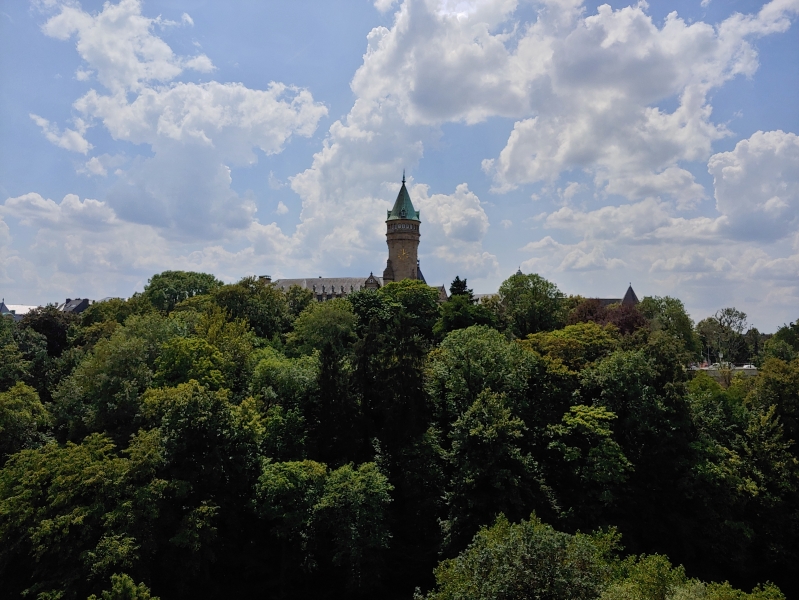
[ G7 ] - [ G6 ] - [ V30 ]
[ Mi MIX 2S ] - [ Pixel 2 XL ] - [ Mate 10 ]
[ P20 ] - [ P20 Pro ]
[ OnePlus 6 ] - [ S9+ ] - [ iPhone X ]
This is admittedly a tough shot as we’re facing against the sun, but there’s several devices which do manage good results. The G7 produces again a far too dark shot, crushing the dynamic range of the picture. Detail retention suffers the same massive issues as previous scenes.

[ G7 ] - [ G6 ] - [ V30 ]
[ Mi MIX 2S ] - [ Pixel 2 XL ] - [ Mate 10 ]
[ P20 ] - [ P20 Pro ]
[ OnePlus 6 ] - [ S8 ] - [ S9+ ] - [ iPhone X ]
This last shot with a lot of green landscape is again a large miss on the part of the G7. Note the stark difference in processing between the G7 and V30, with the latter producing a vastly superior result. Detail retention is again disappointing.
To be noted here is the difference of the AICam effect on the V30 versus on the G7, the latter uses a more heavy-handed approach to the effect while the V30’s result is still pleasing.
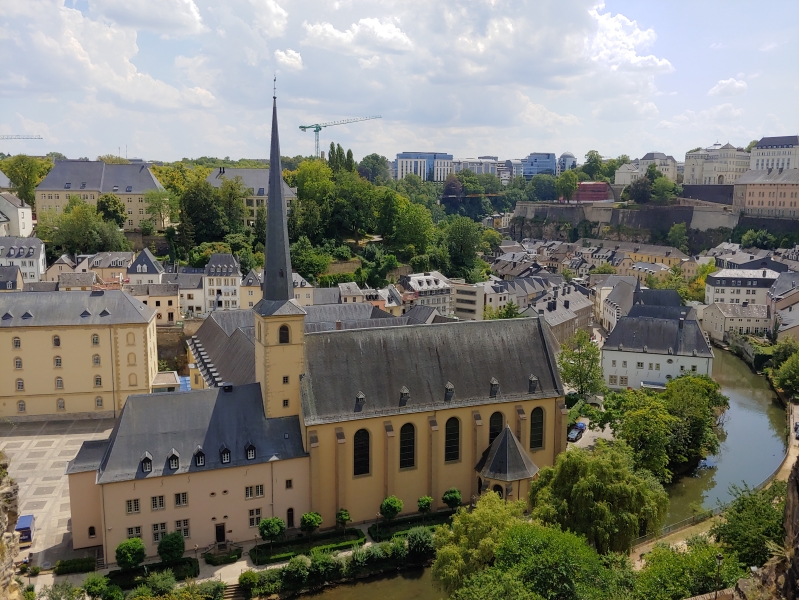
[ G7 ] - [ G6 ]
[ V30 ] - [ Mi MIX 2S ] - [ Pixel 2 XL ] - [ OnePlus 6 ]
[ Mate 10 ] - [ P20 ] - [ P20 Pro ] - [ S8 ] - [ S9+ ] - [ iPhone X ]
The abbey shot is less harsh for the G7 when it comes to exposure, and the result is ok, but it’s still a regression in dynamic range compared to the V30. I don’t have to mention detail retention as the G7 just blurs out the roof tiles, while the V30 actually had one of the best results among current generation flagships.
This scene was probably the single worst for the AICam on the G7 as the resulting colours are just outright comical both in the main camera as well as the wide shot. The same AICam on the V30 resulted in a very light touch in terms of processing and did manage to make for a more subjectively pleasing sky colour.
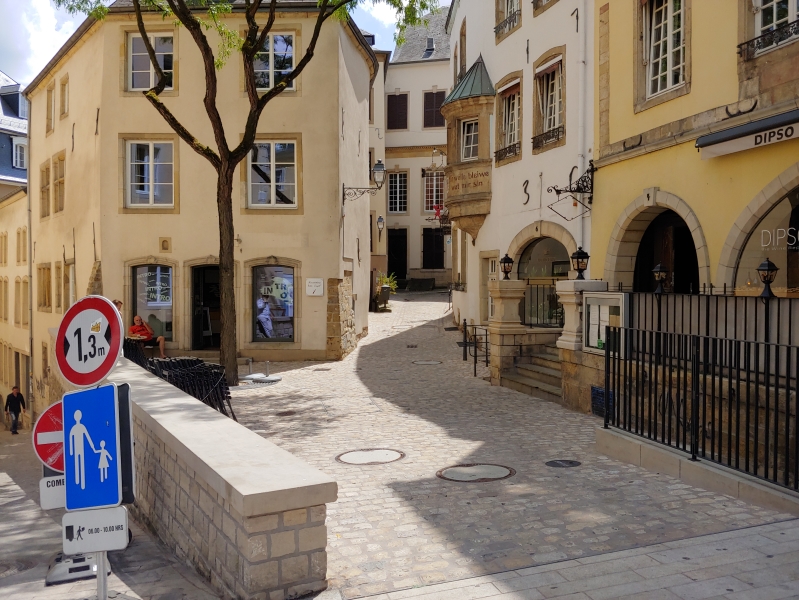
[ G7 ] - [ G6 ] - [ V30 ] - [ Mi MIX 2S ] - [ Pixel 2 XL ]
[ Mate 10 ] - [ P20 ] - [ P20 Pro ] - [ OnePlus 6 ]
[ S8 ] - [ S9+ ] - [ iPhone X ]
The alley shot for the G7 was more forgiving and overall we’re getting good colour balance and exposure. Although a lot less immediately visible, the G7 still loses out detail to the V30 due to its processing.
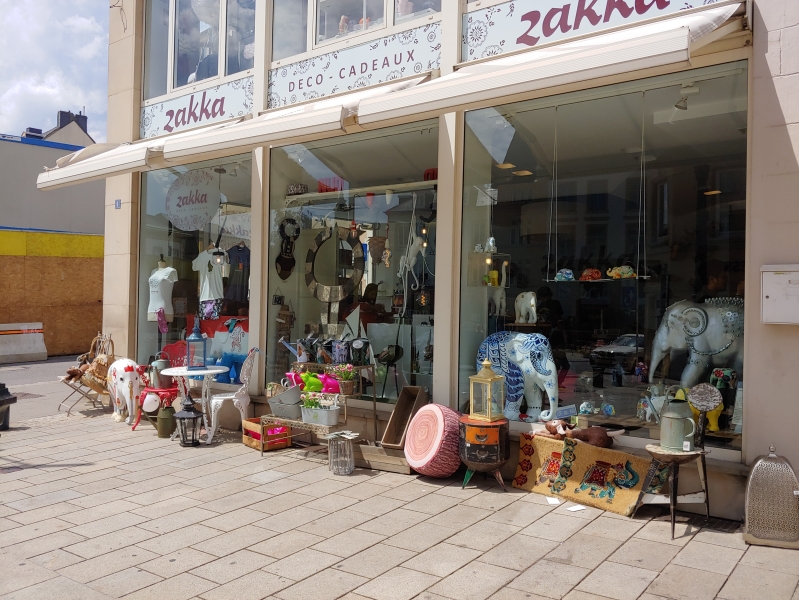
[ G7 ] - [ G6 ] - [ V30 ]
[ Mi MIX 2S ] - [ Pixel 2 XL ] - [ Mate 10 ] - [ P20 ] - [ P20 Pro ]
[ OnePlus 6 ] - [ S8 ] - [ S9+ ] - [ iPhone X ]
The shop front scene is yet another example of how the G7 differs from the V30. Both units use the same exposure at 1/1471s, yet the V30 manages to be ever so slightly more pleasing with its HDR decisions.
Detail wise it’s another disaster for the G7 as it uses needlessly a harsh spatial noise reduction filter. Notice the carpet on the lower right as its details disappear in the G7 shot.
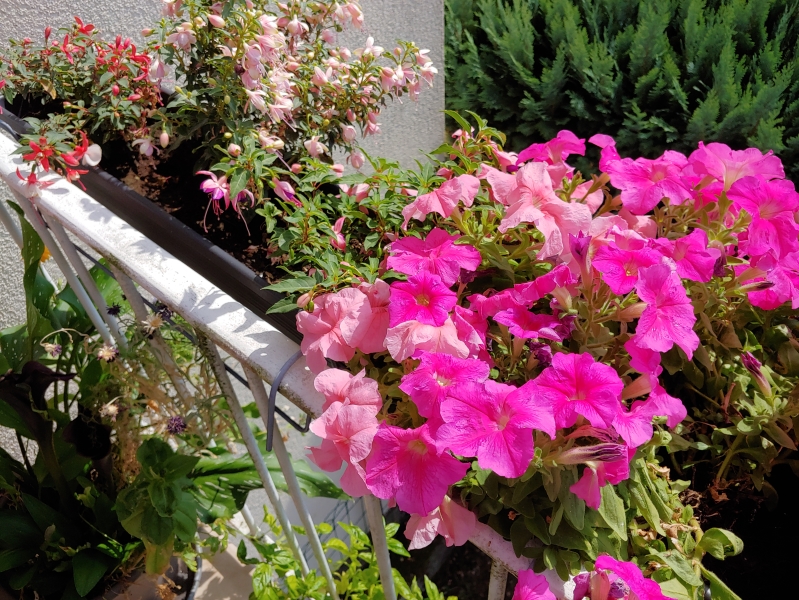
[ G7 ] - [ G6 ] - [ V30 ] - [ Mi MIX 2S ] - [ Pixel 2 XL ]
[ Mate 10 ] - [ P20 ] - [ P20 Pro ] - [ OnePlus 6 ]
[ S8 ] - [ S9+ ] - [ iPhone X ]
The last scene can be used as an analysis on the behaviour of dynamic range retention in scenes where’s there’s a prominent colour reaching the limits of the camera’s sensor. In this case it’s the red petunia flowers in the scene. The best behaving sample from a phone is seemingly the S9+. Again the G7 regresses over the V30 as it compresses the dynamic range needlessly, and this is plainly visible when looking at a histogram of both phone’s pictures.
It’s hard to tell at first glance because of the short focal length of the shot, but again the G7’s details are again blurred out. Best example is the stem hairs on the petunias which just vanish in the G7’s pictures.
Daylight pictures conclusion
Overall in terms of daylight pictures, the G7 was a massive disappointment. When I first started sorting out the images from the phones I couldn’t understand what was wrong with the G7’s samples as I thought I inadvertently shot in a lower resolution or messed up some setting. Re-trying some shots in isolated conditions this is was indeed what the G7 produced. In the past we’ve had some phones which had hardware faults so maybe the phone wasn’t focusing correctly? Looking at sample shots of other review websites confirms that it wasn’t an issue of my unit alone.
Under daylight conditions, the G7 is a regression in every single aspect when compared to the V30. The resulting camera performance is maybe what would have been acceptable 3-4 years ago, but to showcase such poor exposure, consistency and detail in a 2018 flagship is just shameful.
The G7’s saving grace is that its wide-angle camera is still a unique feature and I do think it’s something that has a lot more uses than telephoto lenses, but again that’s something subjective and varies from user to user. The new sensor on the wide-angle helps a lot in terms of dynamic range and detail, however the sensor suffers from the same unbalanced exposures as the main camera.
All in all, what is most embarrassing for LG is that they had a really good camera in the V30 and its processing was extremely competitive, producing results competitive with the best 2018 flagships. The fact that it’s the same sensor and optics just boggles the mind as to what is going on.











69 Comments
View All Comments
melgross - Friday, August 10, 2018 - link
Interestingbthatvwhile they include theciphones in a few benchmarks, they aren’t mentioned in the article even once.lucam - Thursday, August 9, 2018 - link
iPad Pro review anytime soon? Or You guys have given up on testing tablets?collegsd - Friday, July 5, 2019 - link
https://bit.ly/2Xt0XYc
https://bit.ly/32jw9bk
ados_cz - Friday, August 10, 2018 - link
I got new G6 week ago and was really disappointed with the jpeg processing and softness of the ultrawide angle module. Then someone noted that Google Pixel camera app was ported to other snapdragon devices and gets much better results. You can still see that it is not perfect if you pixel-peep, but I am in peace with it now when using the ported app.https://photos.app.goo.gl/d4K6LH4oazGmboBK6
abufrejoval - Saturday, August 11, 2018 - link
Must be quite a sight, seeing you walk around Luxemburg taking pictures with dozens of phones...Andrei Frumusanu - Saturday, August 11, 2018 - link
It's more of an issue of having enough pockets...chadhumm - Saturday, August 11, 2018 - link
One comment. I loved LG's but I had to return the LGG7 the worst phone Ive ever had in regards to reception. Makes all the bells and whistles worthless. This in many areas city and rural. Traded for the S9 it is much better but not as good as the Motorola z force that I was replacing. Too bad because I had good luck with the g2 and g3nikon133 - Sunday, August 12, 2018 - link
I'm reasonably happy with G7. Got it for my work phone as it is much cheaper than S9+ here in NZ... $1000 vs $1500.Camera is my only real disappointment - yes it does watercolor greenery. That said, I am a bit of a camera freak, and there is no camera phone that really satisfies me - whenever I plan to shoot, I will have at least RX100 on me, if not dSLR. This makes me dislike G7 camera even more - but, at the same time, it makes me not care much as well, since I usually don't depend on phone cameras. Down-sampled to ~2MP (1080p full screen), photos are usable. This is really where my phone cameras' expectations end, regardless of model.
Oddly, screen color hasn't really impacted me, albeit I have moved to this phone from Nexus 5X and Lumia 950 XL... both should have decent screens, if memory serves. Might be because I use phone under different light and ever-changing conditions are preventing me from really having an issue with screen accuracy. Screen readability is quite good, even under sun, and resolution is a pleasure. I am wearing glasses for distance and they don't work well up close, so I usually look at the phone screen over the glasses, and, in result, bring phone very close to my face... where resolution shows more than from "normal" reading distance.
Battery holds well in my scenario. Even at the begging when phone use was higher than average - downloading and trying apps, setting accounts, running initial updates etc., I was not draining more than 60% between morning and evening. Everyday use it is 30 - 40%. Basically I can do full 2 days, and with wireless chargers at my office desk and bedside, absolutely no problems here... that said, I don't play games on phone.
Overall? Happy, so far. I'm aware of compromises, but price difference more than justifies them, imho. I am also not a big fan of Samsung's curved screen - it does nook nice but it also does expose screen more, judging from my colleagues' experiences with S7 Edge and S8.
jvl - Sunday, August 12, 2018 - link
But...does it Loop Good®?!? Or will we have to wait until we find out?Great_Scott - Thursday, August 16, 2018 - link
What this review did better than anything else was convince me to get a OnePlus6. It has the best camera at mid/high light levels and the (very well done) LCD screen of the G7 is inefficient at the lowest light levels (which is where I set my phone the vast majority of the time). The smaller-sized battery isn't great either.